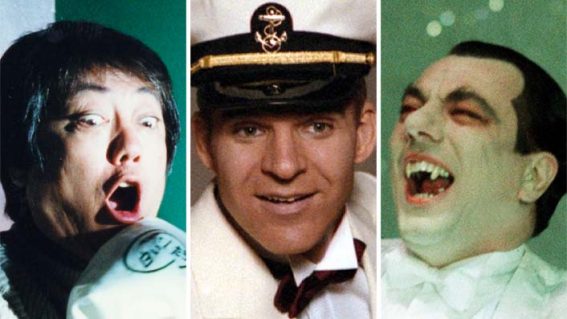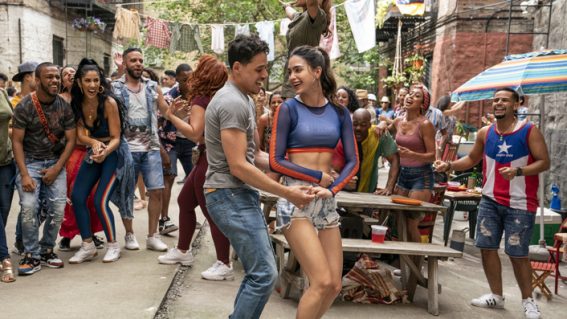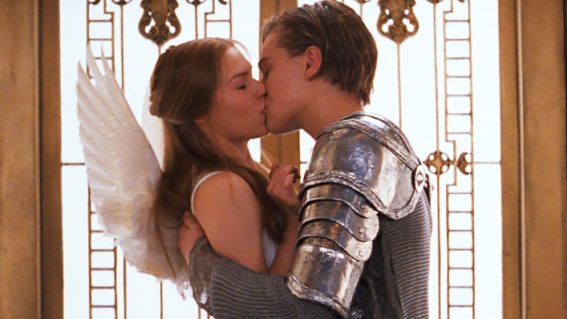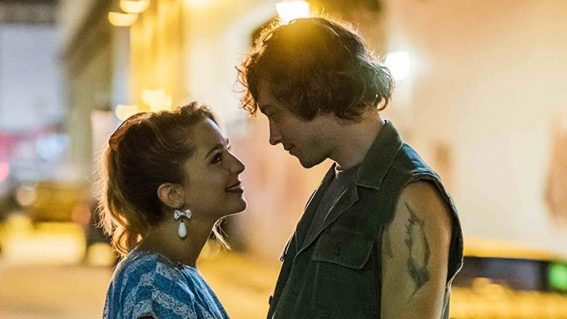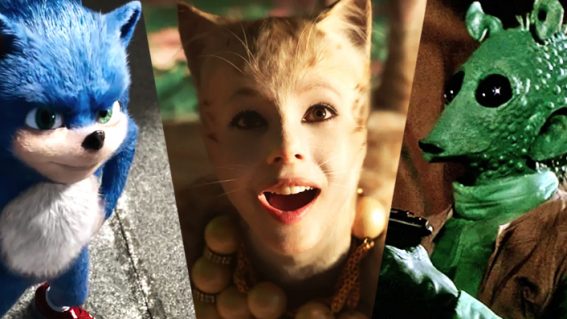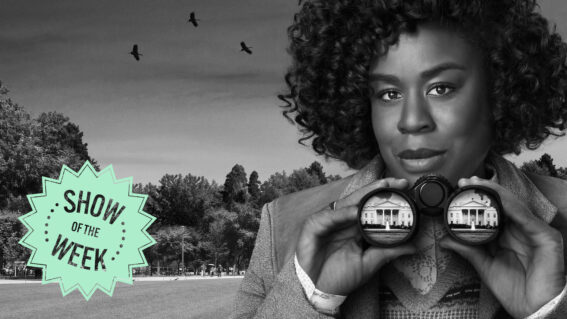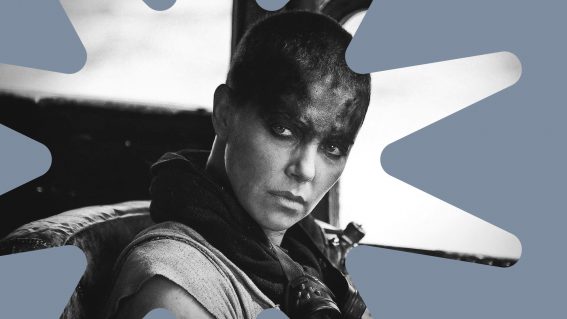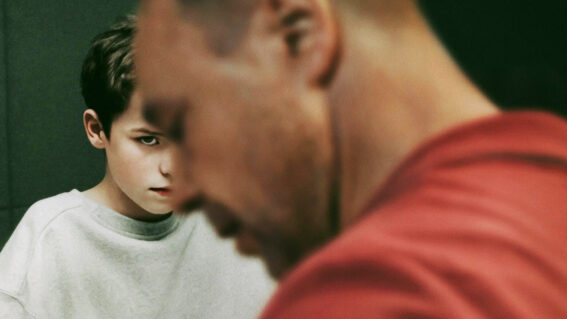The weirdest thing about Cats isn’t the costume design or special effects
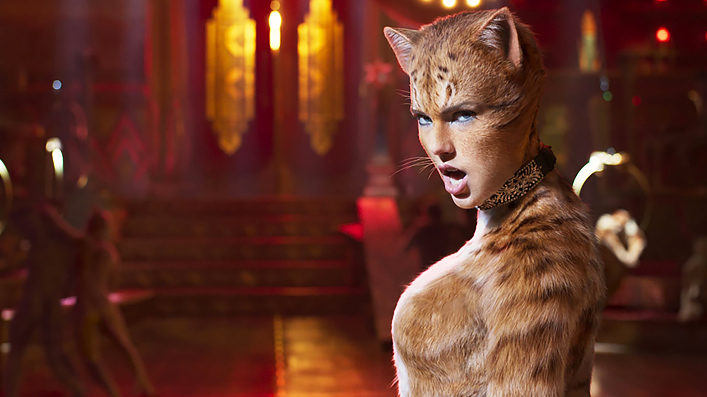
The beloved musical Cats returns to the screen in a wild hairball of a film, with strange costumes and trippy special effects. But there’s something even weirder about this badly botched adaptation, writes critic Luke Buckmaster.
Tom Hooper has directed a couple of solid dramas – The Danish Girl and particularly The King’s Speech – but makes shockingly bad musicals. The British/Australian filmmaker butchered Les Misérables, turning a brilliant show into what the legendary studio mogul Jack Warner would have called a “three piss picture,” his unique approach to film analysis reflecting the number of times Warner left the cinema to go to the john.
Now Hooper gets his mitts on another bona fide classic: Andrew Lloyd Webber’s memeable Broadway phenomenon Cats, a dance musical populated by leotard-clad, whisker-studded performers who slink around sets decorated with supersized objects to make them look small.
The film’s first trailer exploded the internet, triggering a tsunami of outraged responses – some viewers harrumphing about fake looking digital fur and others wondering why the cats had human breasts. In response Hooper and co went back to the editing room and redesigned it, joining a growing, alarming trend of productions that use trailers as a form of mass focus group testing, then alter aesthetic according to the scale of public outcry (the other recent example is the sordid story of the Sonic the Hedgehog movie).
From the magical to the mundane
The opening shot of Cats (coming to cinemas on Boxing Day) drops down from a surreal night sky to the ground of slummy London; from a brief glimpse of the magical to a long stay with the mundane. The film takes place in a spatially limited environment, outside a theatre and milkbar, presented in a pared-back theatrical style – lots of neon reds and blues and mist from a smoke machine.
The plot structure is a way to get the key players to strut into the spotlight and belt out a number one by one, on the scale of do-re-mew. The motion suit wearing human performers, bravely hoping to come out from post-prod wash looking not entirely ridiculous, include Judi Dench, Idris Elba, Jason Derulo, Jennifer Hudson, James Corden, Ian McKellen, Taylor Swift and Rebel Wilson. They play CGI-slathered feline-human amalgamations, trying to impress a leader called Old Deuteronomy (Judi Dench).
Old Deut gets to make “the Jellicle choice,” deciding which cat in her tribe – called the Jellicles – will go to a heaven-like place called “Heaviside Layer.” Everybody is understandably keen to exit this godforsaken place and leave the others all alone in the moonlight. Those words of course belong to the production’s most famous song, Memory, performed here by Jennifer Hudson (as Grizabella) in a couple of different parts – her fervent, face-clenching rendition framed by Hooper mostly in mid-shots and close-ups.
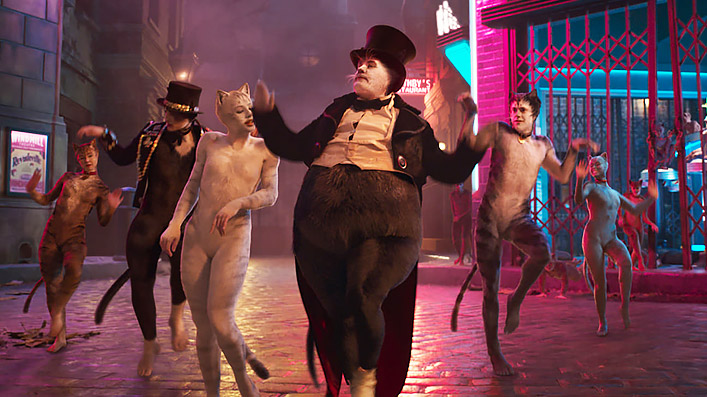
Why Tom Hooper badly botches iconic songs
The director deployed a similar up-close approach in Les Mis to capture (among others) Samantha Barks belting out Eponine’s sublime On My Own. On both occasions he botches it badly, operating in the apparent belief that honing in on human faces brings the essence of theatre to the screen. But there are no close-ups in theatre. The impact of key moments on stage is derived from the quality of the text, the power of a performance and the manipulation of space.
The best movie musicals involve dancing cameras as well as dancing humans. They are works of motion and movement as well as celebrations of space, often invoking sentiments associated with locations. Who could forget Gene Kelly walking down the lane with a happy refrain (“just singing, singing in the rain”) or Judy Garland and the gang on the yellow brick road (“we’re off to see the Wizard!”) or the citizens of Little Shop of Horrors kvetching about living on Skid Row (“where the hop-heads flop in the snow”).
Hooper briefly hat-tips Busby Berkeley’s signature style in an early overhead shot of cockroaches dancing on a cake (naturally) but for the most part Cats is irritatingly staid and visually unadventurous. The cast do what they can: Taylor Swift (as Bombalurina) is the most successful at dishing out attitude and spunk; Ian McKellen (Gus the Theatre Cat) is a missed opportunity as a sad sack old-timer; Idris Elba’s natural magnetism is wasted as Macavity; Rebel Wilson feels contained if not oppressed by the SFX as the comic relief Jennyanydots; and Judi Dench is, frankly, weird, bearing an odd resemblance to the Lion from The Wizard of Oz.
The warped scale and production design is too much
But many things are weird about Cats, including that warped scale and production design. Hooper attempts to reconcile the difference between the size of cats, the size of human faces, and the size of everyday objects, coming up with a bewildering perspective: somewhere between The Cabinet of Dr Caligari and Honey, I Shrunk the Kids.
All this conflicting sensory information struck me as a visual equivalent to the jarring soundscape in Alan Parker’s 1976 film Bugsy Malone, which famously stars a cast of children who mime dialogue and songs entirely sung by adults. In both films the audience never fully acclimatizes to the sheer oddness of the director’s vision, which feels neither logical nor entirely heartfelt.
Parker’s curio came to be regarded as a deranged classic with a popped cork, party-like atmosphere. Cats on the other hand feels more like an awkward social gathering which for some reason involved people dressing up in cat costumes. The weirdest thing about this very weird film is how dull it feels; how devoid of spirit.


